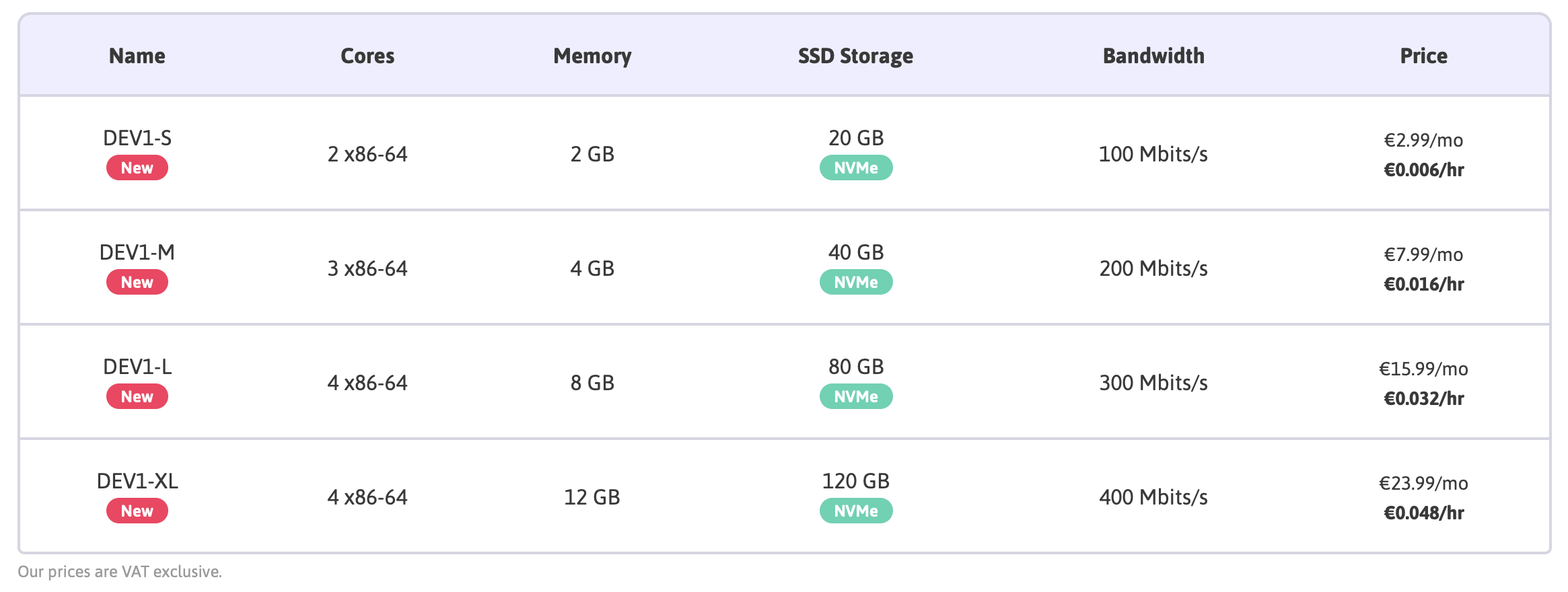Cloud-hosting company Scaleway is upgrading its entry-level instances today. These instances are now all equipped with DDR4 ECC RAM, NVMe SSD storage and AMD EPYC CPUs. As INpact Hardware noted, the company is betting on AMD across the board.
The cheapest instance now costs €2.99 per month ($3.38). For that price, you get 2 CPU cores, 2GB of RAM, 20GB of storage and 100Mbps of bandwidth. There’s no direct equivalent in the previous lineup, as it’s a new price point for the company.
Before today, you could get a server with 1GB of RAM for €1.99 per month, or 2GB of RAM for €3.99 per month, but with more storage and bandwidth too. It remains a solid deal for personal use cases, experiments and servers that don’t get a lot of traffic.
The three new instances in the “DEV1” category cost €7.99 per month ($9) for 3 cores, 4GB of RAM, 40GB of storage and 200Mbps of bandwidth, €15.99 ($18) for 4 cores, 8GB of RAM, 80GB of storage, 300Mbps of bandwidth, and €23.99 ($27) for 4 cores, 12GB of RAM, 120GB of storage and 400Mbps of bandwidth.

If you want more cores and more memory, you need to look at the high-performance instances. If you’re out of storage, you don’t necessarily need to upgrade to a more expensive instance. You can buy block storage per 50GB increments for €1 per month.
With today’s update, Scaleway has now completed its lineup refresh. Older instances will be slowly phased out. Now let’s see if the company plans to open new data centers around the world with these new servers.
from TechCrunch https://ift.tt/2uvRs9M
via IFTTT
Comments
Post a Comment